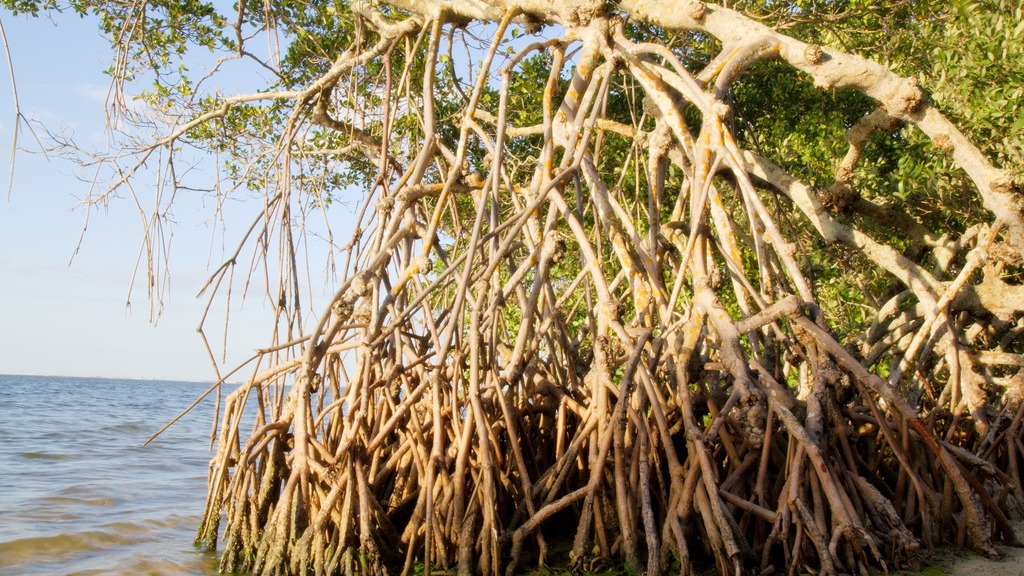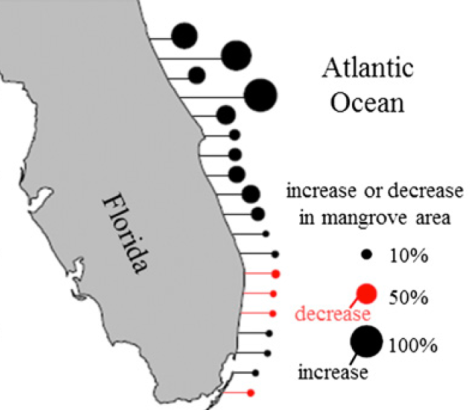
b-clineWatch out, they’re coming for you!
A botanical sea change is underway along the Floridian coastline, where new research suggests that global warming is helping mangroves stretch their strange tentacle-like roots northward.
Mangrove forests — coastal trees and shrubs that live semi-submerged lifestyles — are among the world’s most productive and valuable ecosystems, home to many fish and other wildlife in tropical climates. But experts worry that their northerly march will come at the expense of other habitats.
Mangroves cannot survive if nighttime temperatures get too cold. The decline in frosty nights of less than 25 degrees appears to be helping them displace cold-tolerating marshy grasslands.
Scientists analyzed nearly 30 years of satellite data and concluded that the density of mangroves has doubled in some parts of Florida’s northeast corner.
“Our results indicate that mangroves are expanding poleward along the east coast of North America, and further suggest that this expansion is associated with recent warming,” the scientists wrote in a paper published online Monday by the Proceedings of the National Academy of Sciences. “Other authors have documented expansion of mangrove into saltmarsh on local scales in Florida, Louisiana, and Australia, but with uncertainty regarding the mechanisms behind these expansions.”
Lead author Kyle Cavanaugh, a postdoctoral researcher at Brown University and at the Smithsonian Institution, warned that “there’s an enormous amount of uncertainty” regarding how such changes in mangrove areas will affect food webs as the globe continues to warm. “The mangroves are expanding into and invading salt marsh, which also provides an important habitat for a variety of species.”




